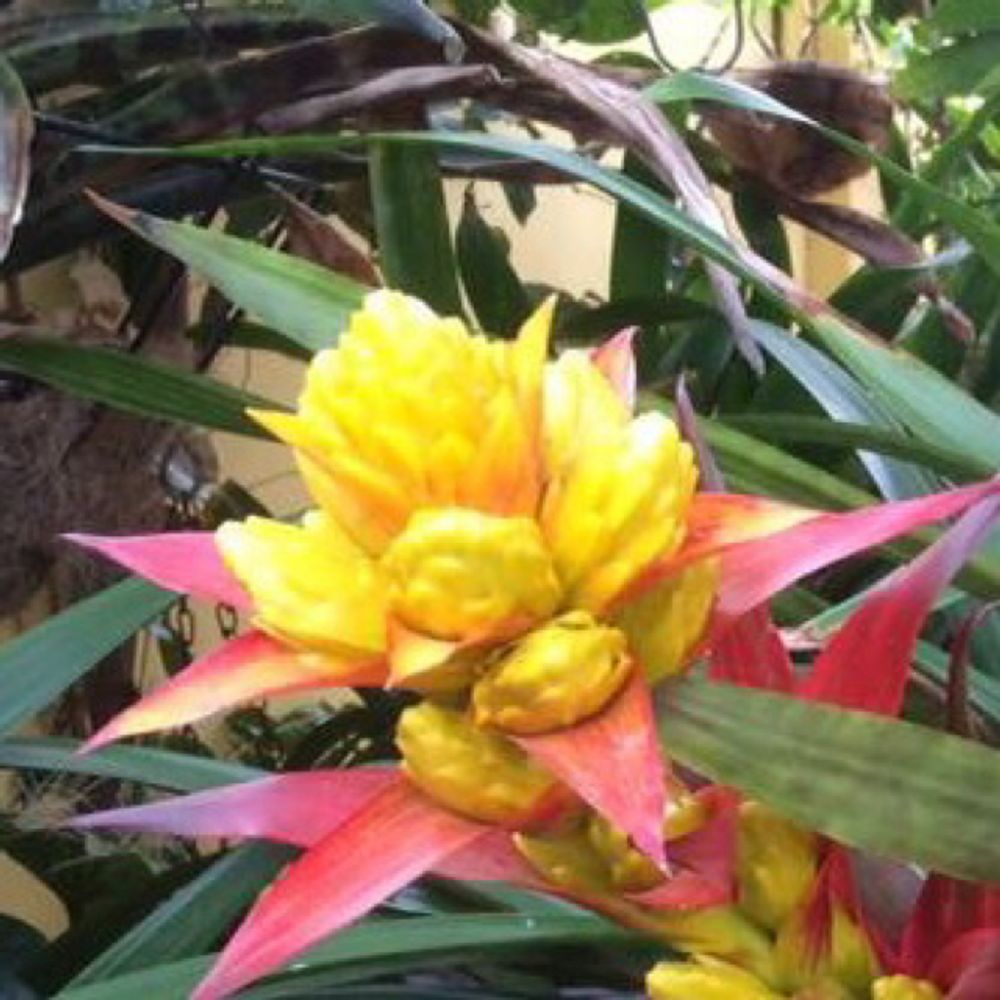Tufted Airplant
(Guzmania)

Description
Bromeliad Guzmania: A Guide to this Colorful Tropical Plant Bromeliads are a large family of tropical plants that are native to the Americas. Within this family, the Guzmania genus is known for its bright and long-lasting blooms. These plants are prized for their ornamental value, and are often used as houseplants or in outdoor landscaping. Description Guzmania is a genus of bromeliads that includes over 100 species of epiphytic plants. These plants grow attached to trees or other structures and obtain their nutrients from the air and rainwater. Guzmanias are characterized by their rosette of long, spiky leaves that are often brightly colored. The leaves can range in color from green to red, orange, or even purple. The real showstopper of the Guzmania is its bloom. The inflorescence is a colorful spike that arises from the center of the leaf rosette. The bracts (modified leaves) of the inflorescence can be red, orange, yellow, or even purple, and they form a cup-like shape around the small, inconspicuous flowers. Guzmanias typically bloom once in their lifetime, but the bracts can persist for several months, making them a long-lasting source of color in the home or garden. Cultivation Guzmanias are well-suited for cultivation as houseplants, and they are also used in outdoor landscaping in warm, humid climates. In order to thrive, these plants require bright, indirect light and high humidity. They can be grown in soil, but are typically grown in a mixture of bark and perlite. When grown as houseplants, Guzmanias should be placed in a location where they will receive bright, indirect light, such as near a east or north facing window. They should also be kept in a warm and humid environment, with temperatures between 60-85°F. It is important to keep the soil consistently moist, but not waterlogged, as this can lead to root rot. Guzmanias are also sensitive to fluoride, which is commonly found in tap water, so it is best to use distilled or rainwater. Propagation Guzmanias can be propagated by dividing the offsets, or pups, that arise from the base of the mother plant. These pups can be carefully separated from the mother plant and repotted into their own containers. Guzmanias can also be propagated by seed, but this method is more challenging and takes longer to produce a mature plant. Pests and Diseases Guzmanias are relatively low-maintenance plants, but they can be susceptible to a few pests and diseases. Common pests include mealybugs and scale insects, which can be controlled with a mixture of water and dish soap. Root rot can occur if the soil is kept too wet, and this can be prevented by allowing the soil to dry out between waterings. In conclusion, Guzmania is a beautiful and low-maintenance bromeliad that is well-suited for cultivation as a houseplant or in outdoor landscaping. With its long-lasting blooms and bright, eye-catching foliage, this plant is sure to bring a touch of the tropics to any home or garden. Guzmania Genus Guzmania (tufted airplant) is a genus of over 120 species of flowering plants in the botanical family Bromeliaceae, subfamily Tillandsioideae. They are mainly stemless, evergreen, epiphytic perennials native to Florida, the West Indies, southern Mexico, Central America, and northern and western South America. They are found at altitudes of up to 3,500 m (11,483 ft) in the Andean rainforests. The genus is named after Spanish pharmacist and naturalist, Anastasio Guzman. Several species of this genus are cultivated as indoor and outdoor garden plants. The best known is Guzmania lingulata (scarlet star) which bears orange and red bracts. The plant dies after it has produced its flowers in summer, but new plants can easily be propagated from the offsets which appear as the parent plant dies. They are epiphytes and can do well if tied on to pieces of bark with roots bound into sphagnum moss. Guzmanias require warm temperatures and relatively high humidity. The sac fungus Bipolaris sorokiniana (anamorph of Cochliobolus sativus) and others can cause fatal root rot in plants of this genus if the roots get too wet and cold.
Taxonomic tree:







